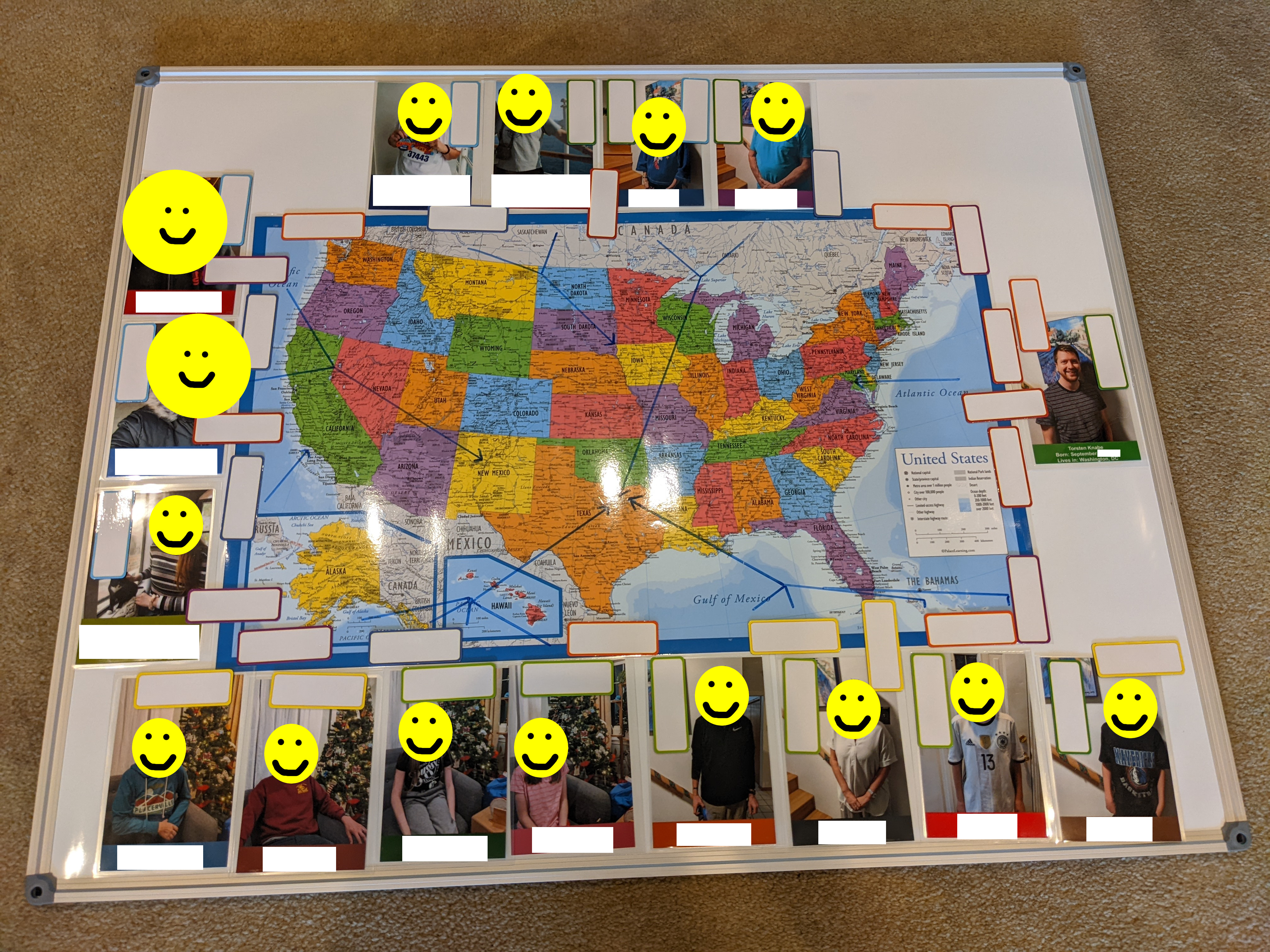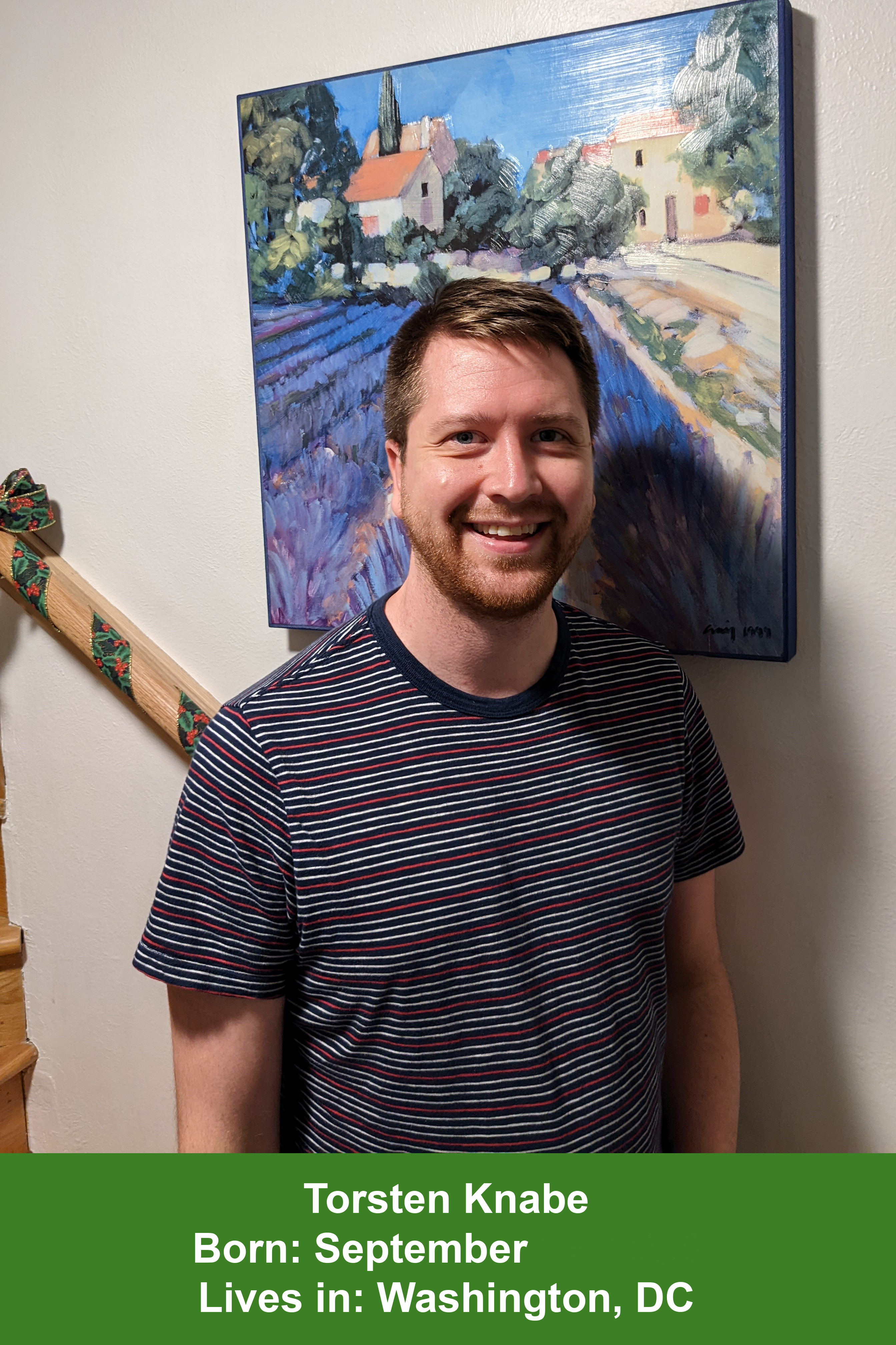My mom has Alzheimer's. Fortunately/unfortunately her dad had Lewy Body Dementia from Parkinsons which presents with many of the same symptoms so I've been through this before. I've written up this post with what we've done so far to make our lives a little bit easier so that it might help somebody else in a similar situation.
Her current symptoms
Right now, my mom still recognizes everyone, but she has started time traveling to the past. As such, her deceased parents are now alive, she has small children she lives with (she doesn't), and she is not married (she is). This presents problems when she tries to find or contact her parents, her small children/her children's schools, and when she's confused why her husband of 25 years is in the house with her. She hasn't yet started wholesale forgetting anyone, but because she's time traveling, the details about them and her relationship with them is different.
I myself have been cloned. My name is Torsten, but my childhood nickname is Tory. Adult me now exists in her mind, but now I have a little brother named Tory who is 5-6 years old. She calls me 5-6 times a day trying to find Tory. Currently we've got it resolved where we were able to convince her that "Tory" moved to Washington DC and now lives with me. Apparently I'm now my own father - my therapist will have a field day with that one I'm sure. All of this is background for other people to know what level she is at - your loved one with Alzheimer's may be in a different spot.
A lot of the tips for us have been to pull her back into reality, which she still can do, she just loses it sometimes and we can help guide her back into it. I fully expect at some point she'll lose that ability, and then we'll just just go along with whatever she's living in the moment as best we can. Thankfully we're not quite at that point yet, but what works for me now may not work for someone else later.
Tips for making life a bit easier
I'm compiling here the good suggestions that I've gotten and steps that I've taken to make it a little bit easier. I think having most of these as early as possible would be beneficial.
- Apparently, they make alzheimer's friendly clocks. My mom is incapable of holding the date in her mind so seeing the date and time makes it much easier for her to grasp. I've linked one but you can just google Alzheimer's clock and you'll find one. You want the font to be big as eyesight also starts to degrade, and also prominent information and nothing else to distract.
- A smart device of some sort. We got my mom an Alexa and she loves it. She can ask it questions a million times in a row and it doesn't mind. For example, she can ask it Alexa what year is it, and Alexa will answer. She is terrible with technology and I was afraid that she wouldn't use it, but she's actually picked up using it for asking questions. The hardest thing is that she will set a timer and then the timer will go off, but she can't recall what the timer is for. I'd like to actually build out an Alexa skill at some point that hijacks the timer function and demands the purpose of the timer and records your voice when you set it. Then when the timer goes off it tells you what the timer is for in your own voice.
- Make a list of their favorite songs and foods if possible when they still know what those are. I read Dementia Reimagined by Tia Powell which I highly recommend. Tia Powell is a physician and bio-ethicist who's mother and grandmother had dementia. She is able to speak from both a clinical and her personal experience to show what the full progression of the disease is like, and strategies she developed that worked. I've made a list of my mom's favorite foods and favorite songs. Apparently towards the end familiar music can be incredibly soothing and when nothing else works, hearing their favorite songs can get them to calm down. Similarly, at the very end it can be a comfort to eat their favorite foods. They'll probably be on a special diet towards the end of their life, but at the very end, giving them something they'll enjoy, even if they can't chew or swallow it can be a comfort. I've made a list of her favorite foods and songs for later and am keeping it stored it a safe place.
- Focus on the moment and what they can do. It can be easy to get sad that they aren't who you know and you're losing them, but try and focus on what they can do right now and just live in the moment with them.
- You get so many second chances. A benefit of Alzheimer's is that since they don't have their memory, so if you answer something or react poorly to a question or statement once, you can try something different next time because they almost assuredly will ask it again. Once you find an answer that works for you, you can stick with it.
- Family photo albums by decade. Because of her time traveling, my mom has trouble believing that her children have grown up. We're compiling albums of photos by decade so she can see people at varying events as they get older. We can then use these as a memory aid if necessary.
- I've made a living display of everyone in her family. My mom constantly doesn't know where people are, where they live, or their age. It's a big dry erase board with a US map on it, and then 3 x 5" photos of each family member around it with an arrow pointing to where they live, along with biographical information about them. I made a separate display for the deceased members of my family. She goes to this board multiple times a day just to look, and it helps solidify the current information about her family for her. I was afraid she would be insulted by it, but she's taken to it with glee because she likes the photos of everyone and she got it as a gift.
Display Tutorial

I'm rather proud of the display I built. I was inspired by the wizard clock that Molly Weasley from Harry Potter has which shows her where all of her family is at any moment. Obviously I don't have a magical clock, but this display does show where everyone in the family lives and can be updated without too much additional work.
- I did a lot of measuring to make sure that the dimensions would work for everything. To start I bought this specific 40" x 30" magnetic whiteboard to give me a big enough canvas to work on.
- Then I bought this 18" x 29" laminated map of the United States to put in the center.
- I also bought this set of 40 magnetic labels to hold up the map and photos.
- I made 3" x 5" printouts for each person in the family. I have the photo of the family member and then below that I put a box with their name, birth date, and location. Obviously their location can change - my oldest niece will graduate college within the year and I expect her to move somewhere new. I'll update the board with a new portrait of her when that happens. The younger grandchildren will get new pictures as they age.
- I printed these portraits out from a Walgreens for less than a dollar each and then went to a Fedex/Kinko's to laminate them 4 at a time, and used the bulk cutter at the store to cut them each out.
- For her husband, I also added their wedding date since she doesn't always recall that they're married. That way, he can always point to the board to point out when they got married, and then point to the clock to let her know that today is after their wedding date and they're still married. It doesn't always work, but it does sometimes and that's an improvement over nothing.
- I happened to make these in photoshop, but honestly any photo editing program would do. If you'd like if you request it from me on the footer of my site, I can send you the PSD files I used to make each portrait card.
- I then assembled the map in the center with the portraits bordering it and holding them all up with magnets.
- I've got dry erase markers that draw a line on the map to where each person is and can be updated if they move, or each portrait can be reprinted if something changes.
- We then mounted the white board to the wall.

Above is the card for me as an example. For my specific birthday and my family images I've cropped out the personally identifying information to not dox my entire family.
I gave this to my mom as a Christmas gift to also give a better chance that she'd accept it. We mounted this in her hallway to the additional bedrooms, which she walks down to find her missing children. She ends up washing the sheets in the extra bedrooms probably once a day because someone slept in them the previous night, or will be coming into town tonight and need clean sheets. For whatever reason, she's become significantly more cleanly than she ever was. I'm not exactly sure why that is. But, because we put it somewhere where she goes frequently, she will just pause and stare at it at varying times. This helps her stay more grounded in reality and helps her keep track of existing family members.
Overall it's been helpful to have these expanded tools. It helps keep her just a bit more grounded in reality, and it gives us something shared to reference if she starts forgetting someone or specific details. Obviously, your mileage may vary, but hopefully this is helpful to someone else going through a similar situation.